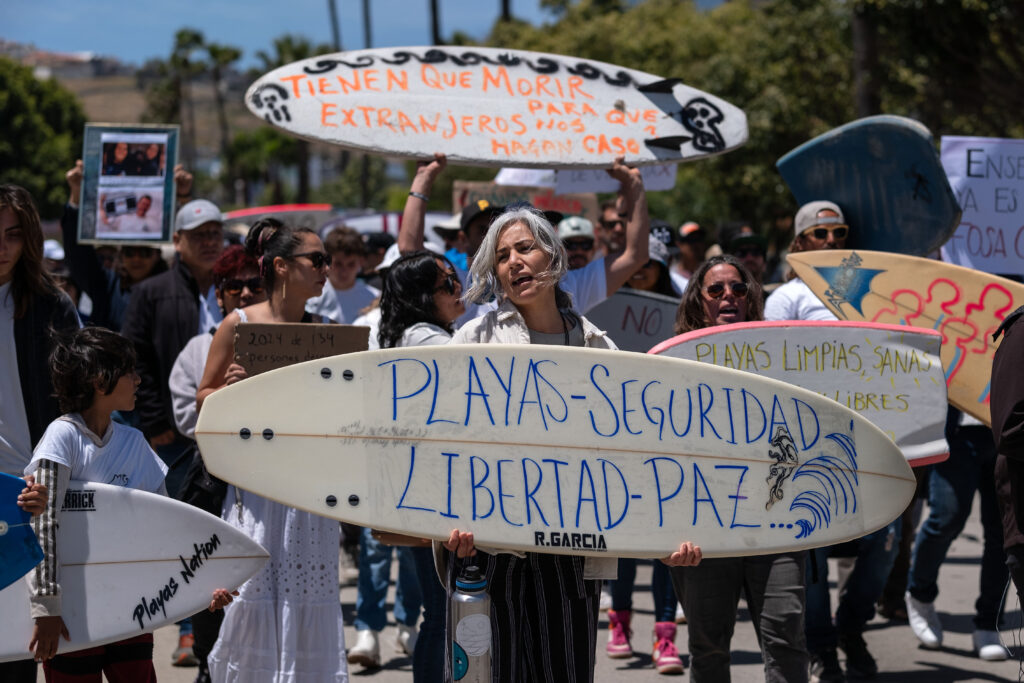Ukraine would give Russia chunk of territory under 28-point US plan
Ukraine would give up a swathe of eastern territory to Russia and slash the size of its army under a sweeping 28-point peace plan backed by US President Donald Trump, according to a draft obtained by AFP.Kyiv would also pledge never to join NATO, and would not get the Western peacekeepers they have called for, although European warplanes would be stationed in Poland to protect Ukraine.A US official told AFP the draft plan includes a powerful security guarantee for Kyiv, modeled on NATO rules, which would commit the US and European allies to respond to any attack on Ukraine.Russia would meanwhile be readmitted to the G8 group of nations and be rewarded with sanctions relief under the plan, which US officials said was still a “working document.”The proposal involves major concessions by Kyiv, which has previously refused to cede any land, while appearing to meet many of Moscow’s maximalist demands following its 2022 invasion.Ukrainian President Volodymyr Zelensky said he expected to discuss the plan with Trump “in coming days.” He said any deal must bring a “dignified peace” that respected Kyiv’s sovereignty.The White House denied reports it had cooked up the proposal with Moscow, saying envoy Steve Witkoff and Secretary of State Marco Rubio had been “quietly” working with both sides for the past month.”The president supports this plan. It’s a good plan for both Russia and Ukraine,” White House Press Secretary Karoline Leavitt told reporters.Trump himself would preside over a “peace council” to oversee the ceasefire, similar to the one proposed for the Gaza truce between Israel and Hamas, according to the plan.- Territory – Key parts of the proposal correspond to Moscow’s previous demands and cross Ukraine’s red lines.These include that Ukraine would withdraw from the Lugansk and Donetsk regions, the frontline industrial belt known collectively as the Donbas that Ukraine still partly holds.The two regions and Crimea, which Russia annexed in 2014, “will be recognized as de facto Russian, including by the United States,” while a demilitarized zone would be created in the Donbas.The war-torn southern regions of Kherson and Zaporizhzhia — which Russia falsely claims to have annexed — will be “frozen along the line of contact,” it said.Russia’s army occupies around a fifth of Ukraine — much of it ravaged by years of fighting.- Ukraine security – Ukraine had been hoping for European-led peacekeepers but Russia’s refusal to accept any such force also wins out in the plan.NATO would agree not to station troops in Ukraine, while the country would be barred from joining NATO by both its own constitution and the alliance’s statutes.Kyiv meanwhile would reduce its army by a little less than half, to 600,000 personnel.In return, Ukraine would receive “reliable security guarantees,” the plan says without specifying, but “European fighter jets” would be stationed in neighboring Poland.Ukraine would also have to hold elections in 100 days — a further Russian demand and one echoed by Trump, who called Zelensky a “dictator without elections” earlier this year.Amid a spiralling corruption scandal in Ukraine that has claimed the jobs of two ministers, Kyiv had meanwhile removed language about an audit of foreign aid and replaced it with a call for a “full amnesty,” a senior US official told AFP.- G8 return for Russia? – Under the proposal, Russia would be “reintegrated into the global economy” and be allowed back into the G8, from which it was expelled in 2014 after the annexation of Crimea.Sanctions would snap back if it invades Ukraine again.Yet Russia meanwhile faces few military restrictions under the plan, which says only that “it is expected that Russia will not invade neighboring countries.”The contents of the proposal plan have fuelled suggestions that Moscow was involved in drafting it. “It seems that the Russians proposed this to the Americans, they accepted it,” a senior Ukrainian source told AFP.But US officials insisted all sides were involved. Zelensky also met a Pentagon delegation headed by US Army Secretary Daniel Driscoll in Kyiv on Thursday.The timing has also raised questions, coming as the corruption row rattles Zelensky and Russia pushes forward with its grinding offensive.On the ground, Russia claimed Thursday to have recaptured the key city of Kupiansk in eastern Ukraine — which Kyiv denied — as Putin visited an army command post to speak with officers.A Russian strike on the city of Zaporizhzhia in southern Ukraine on Thursday killed five people and wounded three others, emergency services said.Since returning to the White House, Trump’s position on the Ukraine war has shifted dramatically back and forth.He rowed with Zelensky in the Oval Office in February but has also shown increasing frustration with Putin after a summit in Alaska produced no results.burs-dk/sla/jgc
Un incendie fait dérailler les dernières 24 heures de négociations de la COP30
Un incendie a bouleversé la dernière ligne droite des négociations climatiques de la COP30 au Brésil, privant les délégués de précieuses heures pour forger un compromis sur la finance et les énergies fossiles avant la fin prévue vendredi soir.Le site à Belem a été fermé pendant près de sept heures jeudi, forçant les négociateurs à …
Un incendie fait dérailler les dernières 24 heures de négociations de la COP30 Read More »
Woman linked to murder of Australian surfers in Mexico sentenced to 20 years
A Mexican court sentenced a woman to 20 years in prison for her involvement in the April 2024 killings of two Australian surfers and an American at a surfing hotspot in Baja California, judicial authorities said Thursday.The victims were Australian brothers Jake and Callum Robinson, aged 30 and 33, respectively, and Jack Carter Rhoad, a 30-year-old US citizen. The three had been camping in a remote beachside area when they were killed in what investigators believe was an attempt to steal their pickup truck.A Mexican judge in Ensenada sentenced Ary Gisell Silva, 23, who admitted during the trial that she had instigated and participated in the robbery of the tourists’ belongings, which subsequently led to the murder of the three surfers.”They have good phones and good tires” on their truck, the young woman allegedly told her three accomplices before they committed the murder, according to evidence gathered in the prosecutor’s investigation.Silva was found guilty of crimes related to “violent robbery,” according to the ruling published Thursday in the public records of the judicial authority of Baja California, bordering the United States.According to evidence presented by the prosecution, Silva was the first to make contact with the tourists and noticed they had valuables. That prompted her to urge her boyfriend and the other two men to commit the robbery.The three other individuals have already been arrested and charged with murder, but they are being tried in separate proceedings.The surfers were reported missing on April 27, 2024, while camping in Ensenada, where they had traveled from the United States to surf.According to the prosecution, the assailants “intentionally surprised the surfers and shot them with firearms, taking their lives on Sunday, April 28.”The crime caused great indignation and sadness in their home countries, where an intense search campaign was launched in the media and on social networks. The bodies were found on May 3, 2024, hidden in a cliff.Other foreign tourists visiting the Mexican Pacific region had already been targets of criminal attacks.In November 2015, two other Australian surfers, Dean Lucas and Adam Coleman, were murdered and their bodies later burned while traveling through the state of Sinaloa.
A big deal: Robert Therrien’s huge sculptures on show in LA
Towering stacks of oversized saucers and furniture fit for giants are some of the treasures on display in Los Angeles at a new exhibition of the work of Robert Therrien.The landmark showing at The Broad is the largest ever museum exhibition of the late artist’s oeuvre.With more than 120 works created over five decades, the show offers visitors the chance to explore both the intimate sketches and the large-scale work of one of Los Angeles’ most celebrated artists.”There’s a lot of works in this show that are sort of an environmental headspace,” Paul Cherwick, co-director of the Robert Therrien Estate, told AFP.”Being under those tables…where it takes you in that area of like remembering being a different size and scale.”Your…perceptions are altered. ”Therrien, who died in 2019 at the age of 71, bucked the minimalist trend in sculpture during the late 20th century, reimagining the mundane as gigantic immersive artworks.Museum managers promise visitors will be able to walk under the huge table and chairs, marvel at enormous hanging beards, and wonder at the stacks of pans huddled in a human-sized cupboard.Ed Schad, curator at The Broad, said the sheer size of some of the exhibits had an almost visceral effect on the viewer.”Sometimes things are bigger than us, sometimes things are smaller than us, but that impacts us physically, but it also impacts us psychologically,” he said.”So when I look at this table and chairs, I think of those experiences from our childhood that might still loom very large for us.””Robert Therrien: This is a Story” runs at The Broad until April 5.
Iranian director Jafar Panahi ramps up French Oscars campaign
After years of being banned from leaving Iran, filmmaker Jafar Panahi is enjoying his tour of the United States — visiting Los Angeles, New York and Telluride — as he promotes his Oscar-hopeful “It Was Just an Accident.” The film, which won the Palme d’Or at Cannes, has been selected by France as its official nomination for the Academy Awards, and is widely expected to make the shortlist for the Best International Feature at the gala event in March.”It Was Just an Accident” tells the story of a torturer from the Islamic Republic who finds himself in the hands of his former prisoners — who were jailed for protesting for women’s rights and fair wages — and their struggle to decide whether to exact revenge or to take the moral high ground.Made clandestinely, filming was halted by the Iranian police at one point, and had to be hastily completed.The fact that post-production was done by a French company allowed France to effectively claim Panahi’s film as its own in the Oscar race, under rules set by the Academy.But Panahi, 65, says he would like to see those rules changed to allow dissidents like him who are censored by Tehran to represent their homeland. “I really wanted it to be for my own country, but when an oppressed society exists, well, some difficulties do arise,” he told AFP during an interview in Los Angeles.The complaint is not new. While film festivals in Cannes, Venice, and Berlin make their own choices for films from around the world, the Oscars require each country’s authorities to nominate a candidate for the Best International Feature Film award. The system has faced increasing criticism and public protests in recent years, particularly in the face of rising authoritarianism. “This decreases and undermines the independence of filmmakers,” said Panahi, who continues to create, despite having been imprisoned twice, barred from making movies in the country and banned from traveling outside Iran until 2023.- ‘Humanist cinema’ that resonates -“Iranian cinema is humanist cinema, and it has always been able to resonate with audiences around the world,” he said, recalling the Oscars awarded to Asghar Farhadi’s “A Separation” and “The Salesman,” as well as the international success of Abbas Kiarostami, who won the Palme d’Or in 1997 for “Taste of Cherry.” Iranian greats have managed to navigate the system, despite pressure from Tehran, but artists fear the atmosphere in the Islamic Republic is increasingly hostile.They say authorities have continued to tighten their grip in the wake of the 2022 popular uprising — despite some continued defiance — sparked by the death in custody of Mahsa Amini, who was arrested for her refusal to wear a headscarf in the approved manner. Last year, director Mohammad Rasoulof went into exile to escape flogging and an eight-year prison sentence after filming “The Seed of the Sacred Fig,” which became Germany’s submission for the Oscars last year.Rasoulof and Panahi were arrested together in 2010 when they were working on a film. Panahi went to prison for 3 months then, and for seven months after a 2022 arrest.Panahi has since honed his techniques for shooting in secret. A significant portion of the plot of “It Was Just an Accident” unfolds in a van, which also served as a hideout. Outdoor scenes were filmed in deserted areas and quiet neighborhoods.”When you live somewhere, because you are in the heart of it, you can find the ways to escape,” he said.The film was partially inspired by Panahi’s own time behind bars. His camera follows the heated debates of ordinary Iranians, who shared the same prison interrogator, over what fate they want for their former jailer, who has been kidnapped by a garage owner.Should they kill him to avenge the humiliations they suffered, or refuse to stoop to their torturer’s level? Through this tormentor, the director sketches an Iran where the mullahs’ power is crumbling, and where this moral dilemma could soon become a collective one. The film, he says, is not just about what happens in the present.”You think about people who are going to live in that country later on, and you think about how you must plant the seeds to overcome violence.”
Tech firms lead Asian stock rout as AI bubble fears linger
Tech firms led more steep losses across Asian markets Friday as investors struggled to shake off fears about an AI bubble and after a sell-off on Wall Street sparked by jobs data dealt a further blow to hopes for a US interest rate cut.A blockbuster earnings report from chip bellwether Nvidia on Wednesday seemed to settle nerves that vast investments in the artificial intelligence sector may have been overdone.But the euphoria was short-lived as warnings grow that the tech-led rally across equities — which has seen several markets hit records and companies clock eye-watering capitalisations — may have run its course, and a correction could be in hand.In unveiling Nvidia’s forecast-topping report, boss Jensen Huang dismissed fears of a bubble that has caused global equities to wobble. “From our vantage point, we see something very different,” he said.After his firm sparked an Asia rally on Thursday, Wall Street began on a strong note, but later went into sharp reverse, with selling compounded by worries over the US labour market.Data showed that while more jobs were created in September, the unemployment rate crept higher. The reading did little to alter investors’ belief that the Federal Reserve will stand pat on borrowing costs when it meets next month, with officials more focused on stubbornly high inflation.Expectations had already been dampened by recent comments from decision-makers, including boss Jerome Powell, that were on the hawkish side.Tracking New York, Asian markets were a sea of red, with tech giants leading the way.Seoul-listed Samsung Electronics sank nearly five percent and rival SK hynix more than nine percent — the firms are two of the world’s leading memory chip makers.Another chip titan, TSMC, tanked nearly four percent in Taiwan, while Japan’s SoftBank plunged more than 10 percent in Tokyo.That led broader markets lower.Tokyo, Hong Kong, Seoul, Sydney and Taipei were all down between 1.6 percent and 3.2 percent. There were also losses in Shanghai, Singapore and Wellington.The rush from risk assets also saw bitcoin fall below the $93,000 mark for the first time since April, extending a sell-off suffered since its record high above $126,200 touched just last month.”The price action across markets has been prolific, and we’ve seen some truly impressive reversals in risk assets,” said Chris Weston at Pepperstone.”Sentiment in so many markets remains highly challenged, and we’ve seen new evidence that managers are dumping their 2025 winners — raising expectations that the path of least resistance is for risk to trade lower in the near-term.”The market seems far more sensitive and ready to de-risk on emerging news, almost seeking reasons to take positioning down when that news could easily be seen as a positive in a more bullish set-up.”Eyes are also on Tokyo, where there is talk that Japanese Prime Minister Sanae Takaichi will unveil a huge stimulus package worth around $130 billion to boost the stuttering economy.But government bond yields have soared in recent days on warnings that the spending will likely need even more borrowing, fanning concerns about the country’s fiscal state and putting huge pressure on the yen.The Japanese currency has fallen this week to its lowest level against the dollar since January, though it got a little support from data showing core inflation ticked up last month, giving the Bank of Japan some room to hike interest rates.- Key figures at around 0200 GMT -Tokyo – Nikkei 225: DOWN 1.8 percent at 48,947.66Hong Kong – Hang Seng Index: DOWN 1.7 percent at 25,393.93Shanghai – Composite: DOWN 1.0 percent at 3,892.76Dollar/yen: DOWN at 157.38 yen from 157.55 yen on ThursdayEuro/dollar: UP at $1.1535 from $1.1525Pound/dollar: UP at $1.3083 from $1.3070Euro/pound: DOWN at 88.15 from 88.18 penceWest Texas Intermediate: DOWN 1.1 percent at $58.36 per barrelBrent North Sea Crude: DOWN 1.0 percent at $62.73 per barrelNew York – Dow: DOWN 0.8 percent at 45,752.26 (close)London – FTSE 100: UP 0.2 percent at 9,527.65 (close)






